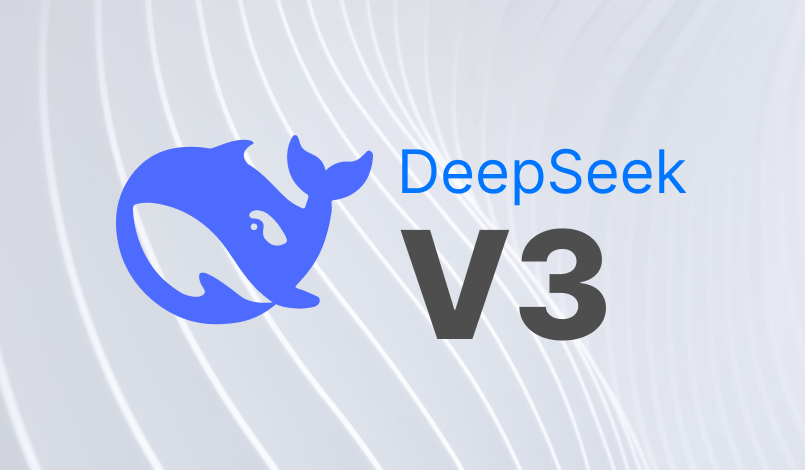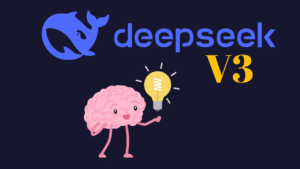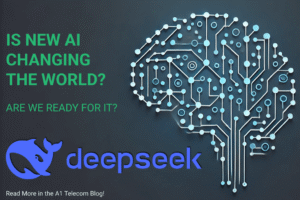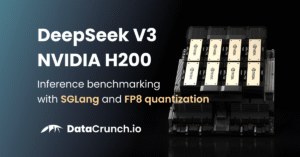DeepSeek V3: A New Open Champion for Code — How DeepSeek’s Latest Release Challenges GPT-4 and Llama 3.1 on Coding Benchmarks
DeepSeek just pushed a big marker into the open-model race. With the release of DeepSeek V3 (and followups like V3-0324 / V3.1), the Hangzhou-based startup has shipped a Mixture-of-Experts (MoE) architecture at scale, open-sourced the weights and code under permissive terms, and published benchmark results showing the model pulling ahead of some established heavyweights on specific coding and reasoning tasks. That combination — high capability, open licensing, and public artifacts — makes this release one of the most consequential open-model drops of the year. Hugging FacearXiv
Below I unpack what DeepSeek V3 actually is, why the company’s engineering choices matter, where the model shines (and where it does not), and what this means for developers, companies, and the broader open-source AI ecosystem.
What is DeepSeek V3?
DeepSeek V3 is a large Mixture-of-Experts language model family that the DeepSeek team describes as a 671-billion-parameter MoE system with ~37B parameters activated per token (i.e., sparse activation). The architecture leverages several custom engineering advances — Multi-head Latent Attention (MLA), DeepSeekMoE routing, and training objectives tuned for multi-token prediction — all aimed at improving inference efficiency and task performance without the cost of dense 671B models. The project’s code, model cards, and weights have been published on repositories like GitHub and Hugging Face. GitHubHugging Face
Important practical details: DeepSeek offers long context (128K tokens reported for V3), uses a mixture-of-experts routing scheme to reduce per-token compute, and documents optimizations in mixed-precision and communication overlap to make large MoE training and inference feasible. These are not just marketing bullets — the technical report and code repository provide explicit implementation notes. arXivWikipedia
The headline claim: outperforming GPT-4 and Llama 3.1 on specific coding tasks
DeepSeek’s technical report and subsequent community evaluations show that V3 leads on several coding-focused benchmarks and coding competition-style datasets (examples cited include LiveCodeBench and similar competition benchmarks). The authors also highlight strong performance on mathematical reasoning tasks (e.g., MATH-500) and some non-complex reasoning problems. Those results are specific: DeepSeek V3 does not claim blanket superiority across every task — instead, it excels in targeted coding and structured reasoning workloads. arXivAnalytics Vidhya
Two important clarifications:
-
Benchmarks are conditional — the win is on specific benchmark suites and settings (prompt format, context length, temperature, and sometimes model variants). Benchmarks matter, but they don’t equal universal dominance. The DeepSeek team’s technical report notes that on some open and closed-source benchmarks V3 outperforms o-class models on coding tasks, while other tasks still favor models like Claude or GPT-4 variants. arXiv
-
Real-world performance varies — coding assistance in practice includes long context, tool use (execution, unit tests), and multi-modal integrations (edit suggestions, documentation lookup). A benchmark score is a strong signal but not the whole story: model latency, reliability, hallucination rates, and integration surface also determine developer experience.
Because of these nuances, it’s fair to say: DeepSeek V3 matches or exceeds the best models on many coding benchmarks and practical code-generation tasks, while other general-purpose tasks may still favor other families. arXivAnalytics Vidhya
Why DeepSeek V3 does well at coding
A few design choices explain why V3 is particularly strong for code:
-
Code-focused pretraining: DeepSeek’s “Coder” family and V3 training data show a heavy tilt toward repository-level code tokens and programming language structures. Training on repo-level corpora with longer windows (16K and longer) helps the model learn project-scale patterns (cross-file dependencies, build scripts, test patterns). This specialization shines on competition benchmarks that reward multi-file reasoning and longer context. deepseekcoder.github.ioHugging Face
-
Sparse MoE scaling: MoE architectures let DeepSeek scale total capacity (671B experts) while activating only a fraction of experts per token (37B effective). That gives the model expressive power for rare, complicated patterns (often present in tricky coding tasks) without the full compute cost of dense models.
-
Long context and attention improvements: V3’s long context (128K) and attention algorithmic improvements (MLA, Native Sparse Attention) allow it to reason about entire projects or long problem statements — crucial when debugging, refactoring, or synthesizing across files. Hugging FacearXiv
-
Engineering for inference efficiency: DeepSeek documents mixed-precision arithmetic and communication overlap tricks that reduce inference latency and memory footprint, making larger context windows practical. For developers, that means you can feed the model much more code at once, improving accuracy for project-level tasks. WikipediaHugging Face
Open-source and licensing: why this release matters beyond raw scores
DeepSeek has publicly emphasized openness. The company released model weights, code, and documentation under permissive licenses (MIT for several artifacts), and made repositories available on GitHub and Hugging Face. That matters for three reasons:
-
Reproducibility and scrutiny: Researchers and engineers can reproduce experiments, probe failure modes, and validate benchmark claims. That transparency builds confidence — and speeds up improvements from the community. Hugging FaceGitHub
-
Ecosystem growth: Open weights enable toolmakers to build local inference stacks, customized fine-tuning, and private deployments without heavyweight vendor lock-in. For enterprise customers with IP or privacy constraints, open models are attractive.
-
Competitive pressure: When a high-performing open model emerges, it forces the larger commercial players to continuously improve their offerings or provide stronger hybrid options. Reuters noted DeepSeek’s push to make code public, which is part of a broader strategy to differentiate via openness. Reuters
This open posture has already made DeepSeek a lightning rod in the conversation about open vs closed model strategies — and it’s part of why the release has drawn such attention. Reuters
Caveats, risks, and operational considerations
While the release is exciting, there are several important caveats to remember:
-
Benchmarks ≠ guarantees: As noted, outperforming on LiveCodeBench or MATH-500 is strong evidence, but real developer workflows include noisy inputs, partial tests, and human-in-the-loop corrections. Benchmarks don’t fully capture hallucination tendencies, supply chain risks, or adversarial prompts.
-
Safety and alignment: Open models that are highly capable can be repurposed. Open-sourcing imposes responsibilities: community moderation, guardrails, and possibly red-team testing. DeepSeek has published technical notes, but open access raises both innovation and misuse tradeoffs.
-
Hardware and deployment costs: MoE models are efficient at inference relative to dense models at the same capacity, but they still require non-trivial infrastructure and specialized routing support for efficient serving. Not every team will be able to deploy the full 671B model economically; smaller distilled or 37B-equivalent variants may be more practical.
-
Geopolitical / supply chain context: The company has navigated commercialization, hardware sourcing and export environments; some reporting suggests delays and hardware sourcing complications when experimenting with alternative chipsets. Operational risks can slow production or create availability differences between regions. Financial Times
How developers and product teams should respond
If you build developer tools, IDE integrations, or internal code assistants, DeepSeek V3 creates practical opportunities:
-
Experiment with the open weights now: If your stack supports it, test DeepSeek V3 on representative tasks (code completion, PR review summaries, unit test generation). Compare against your current model under identical prompts and evaluation metrics.
-
Measure hallucination and correctness: For code, the metric of interest is not only BLEU or token matching but executable correctness. Run generated code against unit tests and simple static analyzers to measure functional accuracy. Don’t rely on human-only inspection.
-
Consider hybrid strategies: Use DeepSeek V3 for heavy lifting (project-level understanding) and combine with other models (e.g., GPT-4, Claude) for areas they still lead (creative writing, broad conversation, or specific tool-integrations). Ensemble or routing approaches can give you the best of both worlds.
-
Plan for ops and safety: If you deploy open weights, put monitoring, rate limits, and content filters in place. Also plan for private fine-tuning on your company’s codebase if permitted by the license.
Bigger picture: what DeepSeek V3 signals for the AI landscape
DeepSeek V3 is meaningful for both technical and strategic reasons:
-
Open models can be cutting-edge: The gap between closed, well-funded models and open alternatives has narrowed considerably. DeepSeek demonstrates that with focused engineering and clever architectures (MoE + long context + code tilt), open projects can compete on capability within key vertical domains like coding.
-
Specialization matters: Generalist models are powerful, but domain-tuned models — particularly for code — can outperform generalists on domain tasks. This supports a future where task-specific, open families coexist with broader, closed offerings.
-
Faster innovation cycles: The availability of weights and code accelerates both research replication and productization. Expect more rapid follow-on variants, forks, and optimizations from the community.
-
Regulatory and geopolitical attention: When open, high-capability models appear, they attract scrutiny not only for safety but also for export, IP, and national security considerations. Recent news reporting suggests DeepSeek’s work is on the radar of global observers. ReutersFinancial Times
Final takeaways
-
DeepSeek V3 is a technically ambitious, openly released MoE model that demonstrates top performance on many coding benchmarks and strong capability on structured reasoning tasks. The model’s open weights, long-context support, and engineering optimizations are the core reasons it performs well for code. Hugging FacearXiv
-
This is not a universal “GPT-4 killer.” Instead, DeepSeek V3 is a major step in a pluralistic model ecosystem: expect it to be the go-to for many coding tasks, while other families retain strengths elsewhere.
-
For practitioners: test it on your real workloads (with executable tests), plan infrastructure and safety mitigations, and consider hybrid routing strategies to combine strengths across models.
-
For the industry: the release intensifies open-model competition and pressures closed vendors to improve access, integration, and value beyond raw benchmark scores.
DeepSeek V3 doesn’t rewrite the rules of AI overnight, but it changes the balance: open models are now demonstrably capable of leading in domain niches, and that shift will reshape how companies choose, tune, and deploy AI assistants — especially for code.
For quick updates, follow our whatsapp channel –https://whatsapp.com/channel/0029VbAabEC11ulGy0ZwRi3j
https://bitsofall.com/alibaba-releasing-the-new-qwen-model-to-improve-ai-transcription-tools/
https://bitsofall.com/https-yourblog-com-increased-investment-in-ai-companies-mistral-ai-databricks/
AI Data Center Water Consumption: Balancing Growth, Sustainability, and Innovation
Switzerland’s open AI model — a new chapter in transparent, public-interest AI






